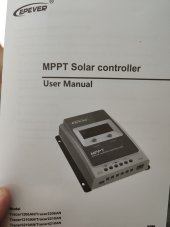OK, shoot!
In a perfect world yes, you would have a fuse between the Batt+ and the battery to protect the wire between the two. IMO if your wire is over-spec for the max amperage the SCC can produce then the fuse can just get put on order and you can throw it in when it arrives.
If your inverter is feeding to a breaker box then the breaker box should have a ground bar that is connected to the inverter already. If not then you'll want to connect something to that ground screw on the end of your inverter to some sort of grounding system in the house like a water pipe or the like, or a plate in the ground, or something. When it comes to grounding there are about 50 ways to do it right, 1500 ways to do it wrong, and 3000 ways to do it kinda-ish-good-enough. Fortunately I've never heard of someone's house burning to the ground because their rod was only2.92m instead of the required 3m. Momentarily someone will be along to tell me I'm wrong though.
Long and short of it, no you do NOT want to connect your Batt- to ground in your case. If this was a vehicle then you would connect it to the chassis.
The only time you need fuses is if you are doing 3 or more strings, and even then only on the + side like you have now. Now that you've got the MPPT controller you can set up your panels in series and just have a single 3s string to the SCC. As long as you can keep the shade off that should net you the maximum wattage out of your 3 panels AND gets around any weird no-paralleling-diode issues.
Yeah, you should see a noticeable improvement right out the gate. Considering what you've been fighting anything over 3a or 36w is going to be gravy.

You did tilt your panels to face the sun better, right?




